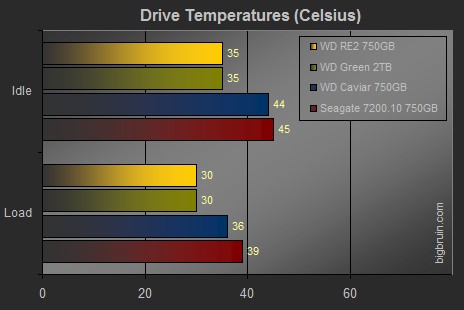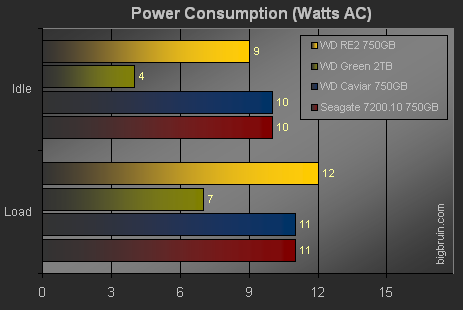Testing (continued):
Thermal Testing:
Thermal testing involved using the 64-Bit version of
CPUID's HWMonitor 1.13 to keep an eye on the temperature of the drives as they were run from idle to load conditions. The idle condition was established by letting the drive sit at the Window's desktop with nothing running for a period of about one hour. The load condition was established by running an HD Tune error scan on the drive while simultaneously transferring data to and from the drive (for a period of about one hour). The chart below details the results.

I was not expecting this "slightly older" drive to be the coolest and quietest option available, but testing proved it was. It managed to match the impressive performance of WD's new green drive in terms of idle and load temperature, and it did so while making minimal noise.
Power Consumption Testing:
Power consumption testing required that each drive was installed in a Thermaltake Vi-On enclosure that was connected to the test system via USB, and plugged into a Seasonic Power Angel at the wall outlet.
The idle and load conditions detailed in the thermal testing also apply to this portion of the review, as the two tests were conducted in the same way. Without a drive installed in the Vi-On the AC power draw was 2W, and the chart below details the idle and load power readings minus that of the enclosure.

The WD RE2 drive draws 1W less than the other 750GB drives while idling, but when forced in to action it draws 1W more. Not the most efficient drive on hand, but somehow it manages to stay cool despite the excess power draw. Checking the manufacturer's specifications indicates that the drive should idle at 8.5 Watts and hit 11.5 Watts while reading and writing. I would say the test results match that fairly well.